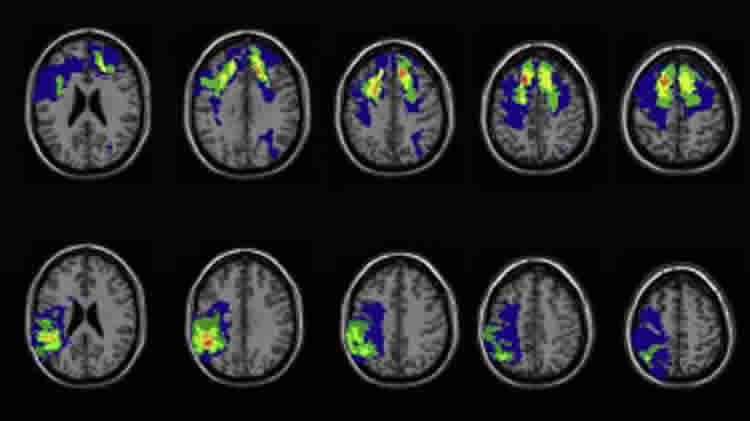New research suggests that suppression of the brain’s inhibitory functions can result in openness to mystical experiences.
The research, from the Rehabilitation Institute of Chicago and Victoria University of Wellington, shows that rather than activating a single area in the brain—what’s been referred to as the potential ‘God Spot’—it is the suppression of the brain’s regulating functions that increases the likelihood of mystical experiences.
Mystical experiences—encounters where people feel they’ve connected to a higher or greater power leading to increased intelligence or insight—have been reported all over the world.
The theories relating to what enables these experiences fall broadly into two camps—push and pull theories.
“Push theories argue that activation of a single ‘God Spot’ causes mystical beliefs, suggesting that injuries to these spots would reduce mysticism. In contrast, pull theories argue that the suppression of our inhibitory functions opens up the brain to mystical experiences,” says Associate Professor Joseph Bulbulia from Victoria University.
“It is a hotly disputed topic, and we set out to clarify the debate.”
The researchers worked with test results from a group of veterans from the Vietnam War who had taken cognitive tests before and after the war. Using CT brain scan data, the researchers were able to examine how damage to certain parts of the brain affected the likelihood of having a mystical experience.
“Our study supports the ‘pull’ theory, as those who suffered traumatic injury to ‘God Spots’ were more likely to have mystical experiences,” says Dr Irene Cristofori from the Rehabilitation Institute of Chicago.

“This suggests that these spots may be linked to inhibitory cognitive functions, and a suppression of these functions, which typically help us regulate and resolve our perceptual experiences, appears to open up a ‘door of perception’, exposing people to more mystical experiences.”
The findings provide credibility but cannot settle the debate about ultimate reality, says Dr Bulbulia.
“We did not study whether mystical experiences are true or false, but instead discovered something about how the brain determines which experiences we perceive as mystical.”
The research, recently published in academic journal Neuropsychologia, was co-authored by Drs Irene Cristofori and Jordan Grafman from the Rehabilitation Institute of Chicago (United States), Associate Professor Joseph Bulbulia, Dr John Shaver and Associate Professor Marc Wilson from Victoria University of Wellington, and Dr Frank Krueger from George Mason University (United States).
Funding: It was funded by the Rehabilitation Institute of Chicago and the National Institute of Neurological Disorders and Stroke.
Source: Victoria University of Wellington
Image Credit: The image is credited to the researchers
Original Research: Abstract for “Neural correlates of Mystical Experience” by Irene Cristofori, Joseph Bulbulia, John H. Shaver, Marc Wilson, Frank Krueger, and Jordan Grafman in Neuropsychologia. Published online November 26 2015 doi:10.1016/j.neuropsychologia.2015.11.021
Abstract
Neural correlates of Mystical Experience
Mystical experiences, or subjectively believed encounters with a supernatural world, are widely reported across cultures and throughout human history. Previous theories speculate that executive brain functions underpin mystical experiences. To evaluate causal hypotheses, structural studies of brain lesion are required. Previous studies suffer from small samples or do not have valid measures of cognitive functioning prior to injury. We investigated mystical experience among participants from the Vietnam Head Injury Study and compared those who suffered penetrating traumatic brain injury (pTBI; n=116) with matched healthy controls (HC; n=32). Voxel-based lesion-symptom mapping analysis showed that lesions to frontal and temporal brain regions were linked with greater mystical experiences. Such regions included the dorsolateral prefrontal cortex (dlPFC) and middle/superior temporal cortex (TC). In a confirmatory analysis, we grouped pTBI patients by lesion location and compared mysticism experiences with the HC group. The dlPFC group presented markedly increased mysticism. Notably, longitudinal analysis of pre-injury data (correlating with general intelligence and executive performance) excludes explanations from individual differences. Our findings support previous speculation linking executive brain functions to mystical experiences, and reveal that executive functioning (dlPFC) causally contributes to the down-regulation of mystical experiences.
“Neural correlates of Mystical Experience” by Irene Cristofori, Joseph Bulbulia, John H. Shaver, Marc Wilson, Frank Krueger, and Jordan Grafman in Neuropsychologia. Published online November 26 2015 doi:10.1016/j.neuropsychologia.2015.11.021






